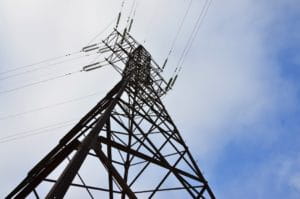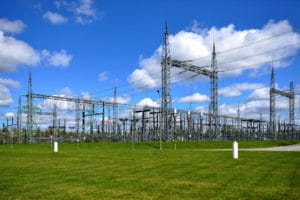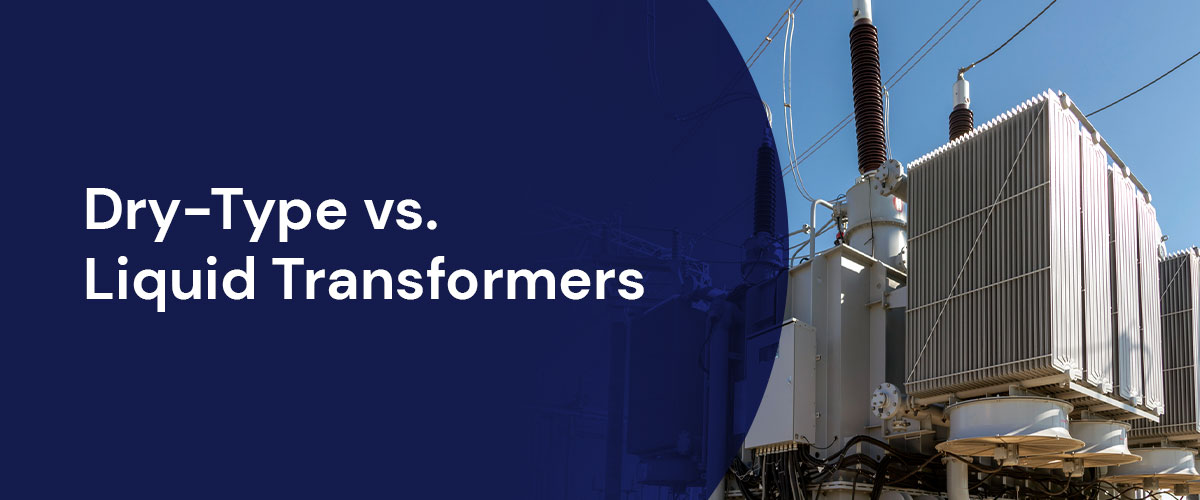
Understanding the differences between air-cooling dry transformers and oil-filled liquid transformers is essential for choosing the right type. When you choose the right electrical transformer for your application, space and voltage requirements, you can increase safety and efficiency while reducing costs.
Before investing in a transformer, it’s important to consider factors such as the cooling medium, maintenance and operational costs associated with dry and liquid transformers.
What Is a Dry-Type Transformer?
A dry-type transformer is insulated and cooled by air or an air and gas combination. It is held in a ventilated case, and the air inside the case circulates to cool the transformer’s coils.
Dry transformers also feature varnished aluminum or copper windings. Dry types are common in industrial, commercial and utility applications that use small or medium-voltage electric equipment, and they come in types including:
- Cast coil: A cast coil transformer’s windings are encapsulated in resin to prevent contaminants, moisture and corrosion from causing damage.
- Open wound: An open wound transformer’s windings are exposed to improve airflow for better cooling.
- Vacuum pressure impregnated (VPI): VPI transformers impregnate windings with class H polyester resin under pressure and vacuum. This resin increases a transformer’s dielectric and mechanical strength and thermal stability to help it withstand high temperature fluctuations and seismic events.
- Vacuum pressure encapsulated (VPE): A VPE transformer features a thicker insulation coating than a VPI transformer, further enhancing its strength and durability.
What Is a Liquid Transformer?
A liquid-type transformer is also known as an oil-filled transformer because it uses oil to maintain temperature. This type of voltage conversion device is mounted on an oil-filled steel tank that cools the transformer. When a liquid-type transformer operates, its iron core and coil generate heat. This heat first transfers to an insulating coil and then to the device’s cooling fluid.
The main types of fluid-type transformers are the following:
- Single-phase: A single-phase transformer features one pair of windings, making it ideal for smaller loads.
- Three-phase: With three pairs of windings, a three-phase transformer can handle small and large loads.
You can install a liquid-type transformer on a pad, a pole or the ground, and you can expect it to perform well in various environments for applications such as:
- Distribution and transmission lines
- Small businesses
- Renewable energy generation
Benefits and Drawbacks of Dry-Type Transformers
Understanding the benefits and drawbacks of dry-type transformers is essential for choosing the right option. Dry-type transformers offer the following advantages:
- Safety: Dry-type transformers are less likely to cause a fire or explode, making them a safer option that doesn’t require a fire-proof enclosure.
- Reduced pollution: You can reduce pollution and environmental risks such as leaks and spills when you use a dry-type transformer.
- Easy inspection: Dry-type transformers are easier to inspect. You can easily remove the coils and connections to see the transformer’s components.
- Great for indoor use: Dry-type transformers are popular for indoor use due to their safety and low fire risk.
- Ideal for medium and low-voltage sites: Dry transformers are a good choice for medium and low-voltage sites.
It’s also important to understand the following drawbacks of a dry-type transformer so you can make an informed decision:
- Larger upfront investment: A dry transformer has a higher upfront cost than a liquid transformer. It often has higher operating costs, as well.
- Limited recycling: Dry-type transformers have limited recyclable parts, causing them to leave a more significant footprint when they reach the end of their life spans.
- Maintenance and repair challenges: Annual maintenance typically requires transformer deactivation and downtime.
- Higher electrical losses: A dry-type transformer typically has higher electrical losses than a liquid type.
- Cooling system: You must install a cooling system to control the heat generated by a dry-type transformer’s losses.
- High noise level: A dry-type transformer typically has a higher operating noise level than a liquid transformer.
Benefits and Drawbacks of Liquid Transformers
A liquid transformer offers the following advantages:
- Lower environmental impact depending on the fluids you use: Liquid-type transformers now use newer, dielectric fluids with high flash points and lower environmental impact. While dry-type transformers eliminate the risk of leaks and spills, liquid transformers are safer for the environment if a leak or spill occurs.
- Easier recycling: A liquid transformer is also easier to remanufacture or recycle, and they have multiple recycling options.
- Quieter operation: A liquid-type transformer offers quieter operation, making it ideal for indoor applications where noise levels need to be reduced.
- Longevity: Liquid transformers usually last longer than dry transformers if you maintain them well.
- Size and efficiency: A liquid transformer is typically smaller and more efficient than a dry type.
Liquid transformers also present the following disadvantages:
- Safety: Some liquid transformers have a higher risk of fire and explosion. You must implement additional protocols to manage these risks.
- Testing and maintenance: An oil-filled transformer requires on-site maintenance and fluid testing to operate reliably.
- Lower cooling ratings: Some liquid transformers have lower cooling ratings than dry transformers.
- Insulating fluids: When you use a liquid transformer, you must be careful to choose the right insulating fluid for each application.
How to Choose Between Dry-Type Transformers and Wet-Type Transformers
Understanding the key differences between dry-type transformer performance and liquid transformer capabilities is essential. These dry-type transformer comparison factors will help you make the right choice for your specific needs. When choosing between a dry-type vs. oil-type transformer, the following factors are important to consider:
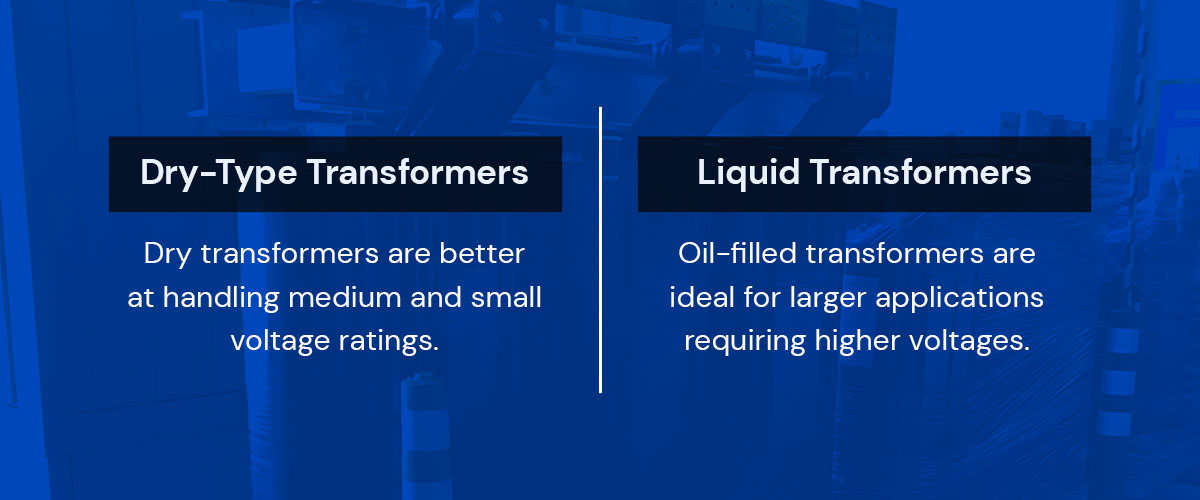
Application and Voltage Capabilities
Choosing an electrical transformer based on your application ensures you use one that can handle your required voltage. Oil-filled transformers are ideal for larger applications requiring higher voltages, while dry transformers are better at handling medium and small voltage ratings.
Efficiency and Operational Cost
While liquid transformers have a higher upfront cost than dry transformers, they typically have lower operational expenses due to their efficiency. An oil-filled transformer is more efficient because it’s smaller and can handle higher voltages, making it less prone to overheating. As a result, a liquid transformer has a lower operating loss and maintenance costs than a dry type. When evaluating dry-type transformer efficiency against liquid models, consider both upfront and operational expenses.
Location
A transformer’s location is important when choosing between wet and dry types because it affects safety and noise levels. A wet transformer offers lower noise levels in outdoor and indoor locations, but a dry type is the safest option for an indoor application, such as inside a shopping center or office building. You can use an oil-filled transformer indoors, but you must take extra precautions and install adequate protection to prevent fires.
Recyclability
Determine how important recyclability is to you. If you want to reduce your environmental impact, an oil-filled transformer is much easier to recycle once it reaches its life span.
Sunbelt Solomon’s Transformer and Electrical Equipment Services
No matter which type of transformer you choose, proper maintenance and repair are essential for longevity. As a full-service provider for companies seeking a turnkey solution, Sunbelt Solomon offers quality transformers and comprehensive in-field maintenance. Our team can help you choose the right transformer for your specific application, and we offer the following services to meet your needs:
- Repair
- Rental
- Buying
- Design
- Unit reconditioning
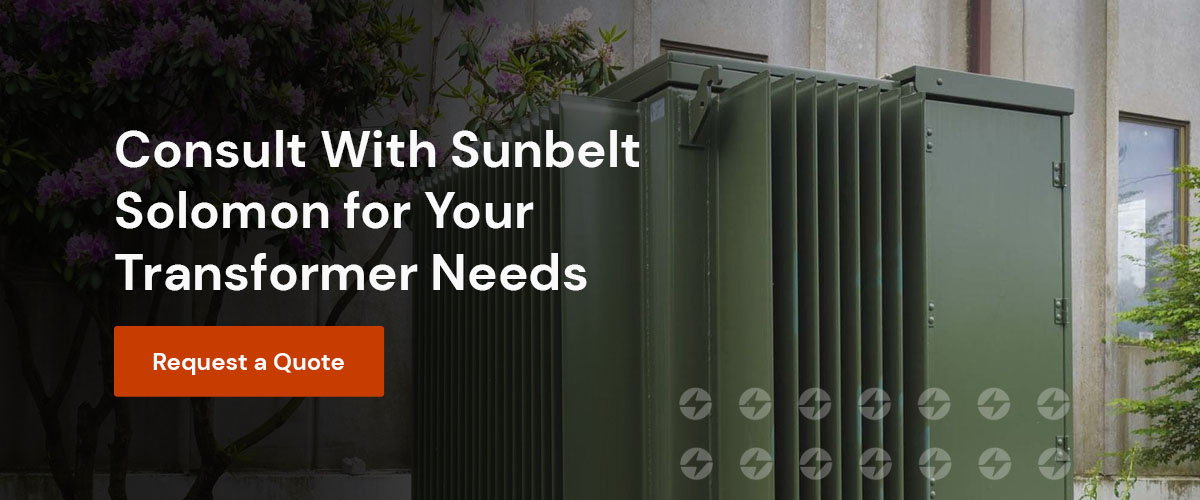
Consult With Sunbelt Solomon for Your Transformer Needs
Choosing the right transformer and seeking high-quality services can help you reduce costs, improve your environmental impact and enhance safety. Sunbelt Solomon carries a wide selection of dry and liquid transformers to meet your needs. Contact us to learn more about our inventory and services and how we can help you choose the best option for your application.

